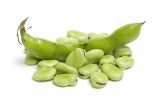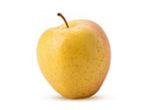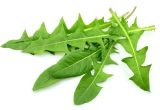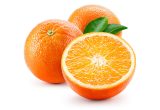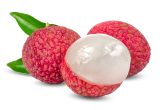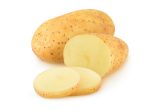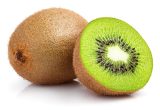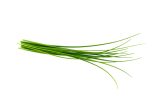Pineapple

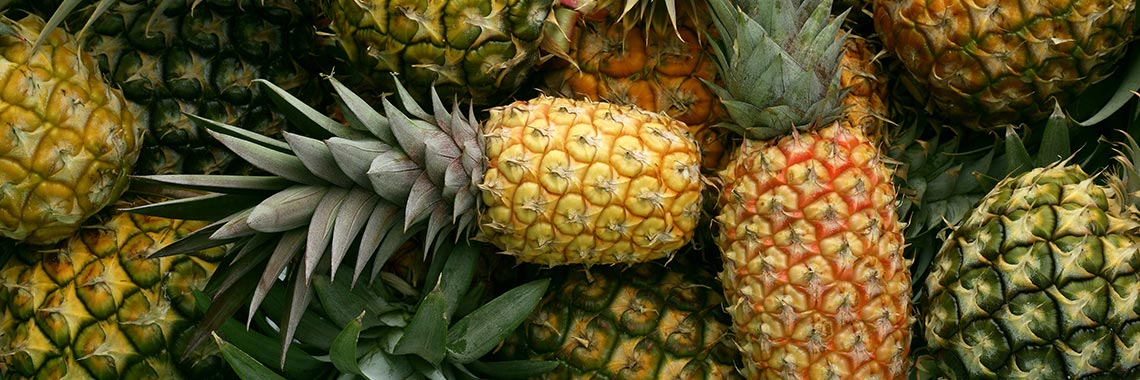
Description
- Pineapple (Ananas comosus L.) belongs to the Bromeliaceae family.
- It is a plant native to Central and South America.
- Costa Rica is the leading producer of pineapple for the fresh market (CIRAD, 2016).
- The main varieties of pineapple are Cayenne Smooth, Sweet (or Del Monte Gold®), Sugar Loaf, Queen and MD2 or “Rompine”.
PHYSICAL AND ORGANOLEPTIC CHARACTERISTICS
- Pineapple is a non-climacteric fruit which means that, once picked, it does not ripen (Redwan, 2016).
- Its orange-yellow colour is derived from a small number of carotenoids with 66.90 µg of β-carotene per 100 g, and evolves according to the degree of ripening of the fruit (Brat, 2004; Aprifel Study – Anses 2017-2019).
- Other carotenoids, such as violaxanthin, and various esters of (9Z)-violaxanthin are thought to be responsible for the colour of pineapple flesh (Steingass, 2020)
- The taste and quality of pineapple depend mainly on factors such as the content in sugars, organic acids (mainly citric and L-malic acids), amino acids and aromatic compounds, and firmness. However, the taste of pineapple is mainly influenced by the total concentration of sugars and their nature, namely sucrose, fructose and glucose (Zhang, 2012 Ivanova, 2019).
- Sugar content, which varies throughout fruit development, can be affected by environmental factors such as temperature, rainfall and fertilisation (Dorey, 2016).
- As with carbohydrates, the level of organic acids varies significantly with the state of ripeness of the fruit (Koia, 2012). These include in particular citric acids.
- Of the 280 volatile compounds identified in pineapple, only a few contribute to its aroma, including 4-hydroxy-2,5-dimethyl-3(2H)-furanone, ethyl 2-methylpropanoate, ethyl 2-methylbutanoate, methyl 2-methylbutanoate and 1-(E,Z)-3,5-undecatriene (Tokitomo, 2005).
COMPOSITION CHARACTERISTICS (excluding macronutrients, vitamins and minerals)
- Polyphenol composition:
- Containing a significant amount of polyphenols and in particular gallic acid, pineapple has a beneficial action against oxidative stress linked to obesity, by protecting red blood cells and pre-adipocytes, and consequently improves the antioxidant capacities of the body (September-Malaterre, 2016).
- Pineapple contains myricetin, a compound of the flavonol family that has strong antioxidant activity. A daily consumption of this compound (120.5 ± 95.7 mg) is linked to a decrease in the prevalence of type 2 diabetes (Yao, 2019).
- A Chinese team quantified and compared the phenolic acid, β-carotene and ascorbic acid (AA) contents of seventeen pineapple varieties and their antioxidant activities. The variety ‘MD-2’, also known as ‘Rompine’, had the highest levels of AA and total polyphenols, but lower levels of β-carotene. It also had the largest diversity of phenolic compounds and the highest antioxidant activities (Du, 2016).
- Bromelain composition:
- Bromelain, a protease from pineapple, helps reduce thrombogenesis, and has antihypertensive and antimicrobial effects. It also has a potential natural anticarcinogenic effect by acting as an immune modulator against tumour cells (Lee, 2019)
RAW
Values are to be considered as orders of magnitude, likely to vary according to varieties, season, degree of ripeness, growing conditions, etc.
Pineapple provides on average 54.40 calories (kcal) per 100 g or 231 kJ.
TABLES OF COMPOSITION
For each nutrient, the tables provide information on the content, minimum and maximum values, and percentage of the Nutrient Reference Values (NRVs) per 100 g net of pineapple.
MACRONUTRIENTS
| Constituent (g) | Average content |
Min-Max per 100g |
DRV% |
|---|---|---|---|
| Water | 85,50 | 82,50 - 91,60 | - |
| Fibers | 1,20 | NC - 1,50 | - |
| Carbohydrates | 11,70 | - | 4,50 |
| Sugars | 10,50 | 6,90 - 11,50 | 11,67 |
| Lipids | < 0,50 | 0,05 - NC | - |
| Saturated fat | < 0,01 | 0 - NC | - |
| Protein | < 0,50 | 0,30 - 0,74 | - |
| Constituent (g) | Amount | Min-Max | DRV% |
|---|---|---|---|
| Water | Ciqual 2020 (valeur issue des analyses Ciqual-Aprifel 2017) | - | - |
| Fibers | Ciqual 2020 (valeur issue des analyses Ciqual-Aprifel 2017) | - | - |
| Carbohydrates | Ciqual 2020 | - | Règlement (UE) N°1169/2011 du parlement Européen et du conseil du 25 octobre 2011 |
| Sugars | Ciqual 2020 (valeur issue des analyses Ciqual-Aprifel 2017) | - | Règlement (UE) N°1169/2011 du parlement Européen et du conseil du 25 octobre 2011 |
| Lipids | Ciqual 2020 (valeur issue des analyses Ciqual-Aprifel 2017) | - | Règlement (UE) N°1169/2011 du parlement Européen, et du conseil du 25 octobre 2011 |
| Saturated fat | Ciqual 2020 (valeur issue des analyses Ciqual-Aprifel 2017) | - | Règlement (UE) N°1169/2011 du parlement Européen et du conseil du 25 octobre 2011 |
| Protein | Ciqual 2020 (valeur issue des analyses Ciqual-Aprifel 2017) | - | Règlement (UE) N°1169/2011 du parlement Européen, et du conseil du 25 octobre 2011 |
Focus on carbohydrates
- Pineapple’s energy comes to it primarily from its carbohydrates, to the tune of 11.70 g per 100 g.
- His carbohydrate content is higher than the average amount found in fresh fruit (11.31 g per 100 g).
- These are mainly sucrose (6.40 g per 100 g), fructose (2.30 g per 100 g) and glucose (1.80 g per 100 g). Their proportion and the rate of carbohydrates in the pineapple depend on its maturation.
Focus on fiber
- Pineapple contains 1.20 g of fiber per 100 g on average, which is below the average for fresh fruit (2.77 g per 100 g).
Focus on fat
- Pineapple does not contain fat* as it provides less than 0.5 g per 100 g.
* Regulation (EC) No 1924/2006 of the European Parliament and of the Council of 20 December 2006 on nutrition and health claims made on foods.
MINERALS AND TRACE ELEMENTS
| Constituent | Average content |
Min-Max per 100g |
DRV% |
|---|---|---|---|
| Calcium (mg) | 8 | 6 - 25,30 | 1 |
| Chloride (mg) | 21,60 | - | 2,70 |
| Copper (mg) | 0,06 | 0,039 - 0,19 | 6 |
| Iron (mg) | 0,17 | 0,13 - 0,54 | 1,21 |
| Iodine (µg) | < 20 | 0,60 - NC | - |
| Magnesium (mg) | 15 | 9 - 24 | 4 |
| Manganese (mg) | 0,84 | 0,12 - 4,17 | 42 |
| Phosphorus (mg) | 8,10 | 5 - 18,60 | 1,16 |
| Potassium (mg) | 140 | 81 - 241 | 7 |
| Selenium (µg) | < 20 | 0,60 - NC | - |
| Sodium (mg) | - | 1 - NC | - |
| Zinc (mg) | 0,08 | 0,04 - 0,15 | 0,80 |
| Constituent | Amount | Min-Max | DRV% |
|---|---|---|---|
| Calcium (mg) | Ciqual 2020 (valeur issue des analyses Ciqual-Aprifel 2017) | - | Règlement (UE) N°1169/2011 du parlement Européen et du conseil du 25 octobre 2011 |
| Chloride (mg) | Ciqual 2020 (valeur issue des analyses Ciqual-Aprifel 2017) | - | Règlement (UE) N°1169/2011 du parlement Européen et du conseil du 25 octobre 2011 |
| Copper (mg) | Ciqual 2020 (valeur issue des analyses Ciqual-Aprifel 2017) | - | Règlement (UE) N°1169/2011 du parlement Européen et du conseil du 25 octobre 2011 |
| Iron (mg) | Ciqual 2020 (valeur issue des analyses Ciqual-Aprifel 2017) | - | Règlement (UE) N°1169/2011 du parlement Européen et du conseil du 25 octobre 2011 |
| Iodine (µg) | Ciqual 2020 (valeur issue des analyses Ciqual-Aprifel 2017) | - | Règlement (UE) N°1169/2011 du parlement Européen, et du conseil du 25 octobre 2011 |
| Magnesium (mg) | Ciqual 2020 (valeur issue des analyses Ciqual-Aprifel 2017) | - | Règlement (UE) N°1169/2011 du parlement Européen et du conseil du 25 octobre 2011 |
| Manganese (mg) | Ciqual 2020 (valeur issue des analyses Ciqual-Aprifel 2017) | - | Règlement (UE) N°1169/2011 du parlement Européen, et du conseil du 25 octobre 2011 |
| Phosphorus (mg) | Ciqual 2020 (valeur issue des analyses Ciqual-Aprifel 2017) | - | Règlement (UE) N°1169/2011 du parlement Européen et du conseil du 25 octobre 2011 |
| Potassium (mg) | Ciqual 2020 (valeur issue des analyses Ciqual-Aprifel 2017) | - | Règlement (UE) N°1169/2011 du parlement Européen et du conseil du 25 octobre 2011 |
| Selenium (µg) | Ciqual 2020 (valeur issue des analyses Ciqual-Aprifel 2017) | - | Règlement (UE) N°1169/2011 du parlement Européen et du conseil du 25 octobre 2011 |
| Sodium (mg) | Ciqual 2020 (valeur issue des analyses Ciqual-Aprifel 2017) | - | - |
| Zinc (mg) | Ciqual 2020 (valeur issue des analyses Ciqual-Aprifel 2017) | - | Règlement (UE) N°1169/2011 du parlement Européen et du conseil du 25 octobre 2011 |
Focus on minerals and trace elements
- Pineapple is rich in manganese as it provides the equivalent of 42% of the NRV for manganese, or 0.84 mg per 100 g.
- The mineral most present in pineapple is potassium with a content equivalent to 7% of the NRVs in potassium, or 140 mg per 100 g.
- The other minerals and trace elements are present in amounts representing less than 7% of NRVs.
VITAMINS
| Constituent | Average content |
Min-Max per 100g |
DRV% |
|---|---|---|---|
| Provitamin A Beta-carotene (µg) | 66,9 | 17 - NC | - |
| Vitamin A equivalent (µg) | 11,15 | 2,83 - NC | 1,39 |
| Vitamin B1 (mg) | 0,056 | NC - 0,11 | 5,09 |
| Vitamin B2 (mg) | 0,033 | 0,01 - 0,052 | 2,36 |
| Vitamin B3 (mg) | 0,31 | 0,17 - 1,49 | 1,94 |
| Vitamin B5 (mg) | 0,17 | 0,05 - 0,45 | 2,83 |
| Vitamin B6 (mg) | 0,052 | NC - 0,15 | 3,71 |
| Vitamin B9 (µg) | 19,60 | 8 - 36 | 9,80 |
| Vitamin C (mg) | 46,10 | 7,90 - 70,70 | 57,63 |
| Vitamin E (mg) | < 0,08 | 0,02 - 0,10 | - |
| Vitamin K1 (µg) | < 0,80 | 0,20 - 1,20 | - |
| Constituent | Amount | Min-Max | DRV% |
|---|---|---|---|
| Provitamin A Beta-carotene (µg) | Ciqual 2020 (valeur issue des analyses Ciqual-Aprifel 2017) | - | - |
| Vitamin A equivalent (µg) | Calcul à partir de la valeur Provitamine A Béta-carotène* | - | Règlement (UE) N°1169/2011 du parlement Européen et du conseil du 25 octobre 2011 |
| Vitamin B1 (mg) | Ciqual 2020 (valeur issue des analyses Ciqual-Aprifel 2017) | - | Règlement (UE) N°1169/2011 du parlement Européen et du conseil du 25 octobre 2011 |
| Vitamin B2 (mg) | Ciqual 2020 (valeur issue des analyses Ciqual-Aprifel 2017) | - | Règlement (UE) N°1169/2011 du parlement Européen et du conseil du 25 octobre 2011 |
| Vitamin B3 (mg) | Ciqual 2020 (valeur issue des analyses Ciqual-Aprifel 2017) | - | Règlement (UE) N°1169/2011 du parlement Européen et du conseil du 25 octobre 2011 |
| Vitamin B5 (mg) | Ciqual 2020 (valeur issue des analyses Ciqual-Aprifel 2017) | - | Règlement (UE) N°1169/2011 du parlement Européen et du conseil du 25 octobre 2011 |
| Vitamin B6 (mg) | Ciqual 2020 (valeur issue des analyses Ciqual-Aprifel 2017) | - | Règlement (UE) N°1169/2011 du parlement Européen et du conseil du 25 octobre 2011 |
| Vitamin B9 (µg) | Ciqual 2020 (valeur issue des analyses Ciqual-Aprifel 2017) | - | Règlement (UE) N°1169/2011 du parlement Européen et du conseil du 25 octobre 2011 |
| Vitamin C (mg) | Ciqual 2020 (valeur issue des analyses Ciqual-Aprifel 2017) | - | Règlement (UE) N°1169/2011 du parlement Européen et du conseil du 25 octobre 2011 |
| Vitamin E (mg) | Ciqual 2020 | - | Règlement (UE) N°1169/2011 du parlement Européen et du conseil du 25 octobre 2011 |
| Vitamin K1 (µg) | Ciqual 2020 (valeur issue des analyses Ciqual-Aprifel 2017) | - | Règlement (UE) N°1169/2011 du parlement Européen et du conseil du 25 octobre 2011 |
Focus on vitamins
- Pineapple is rich in vitamin C as it provides the equivalent of 57.63% of the vitamin C NRV, or 46.10 mg per 100 g.
- Vitamin B9 is the 2nd most notable vitamin in pineapple with a content of 19.60 µg per 100 g (or 9.80% of the NRV in vitamin B9).
- The other vitamins are present in amounts representing less than 6% of NRVs.
*Calculation made: Beta Carotene / 6 + retinol
POLYPHENOLS
| Constituent (mg) | Average content |
Min-Max per 100mg |
|---|---|---|
| Total polyphenols | 147,91 | 40,60 - 174 |
| Constituent (mg) | Amount | Min-Max |
|---|---|---|
| Total polyphenols | Phenol Explorer 3.6 Méthode utilisée : Folin assay | - |
Focus on polyphenols
- Polyphenols are substances with antioxidant effects.
- Pineapple has a notable content of total polyphenols, according to Folin assay analysis.
Nutrition and health claims
According to the definitions of nutrition claims as presented in Regulation (EC) No. 1924/2006 on nutrition and health claims, and in view of the composition of pineapple, the following claims may be used:
PINEAPPLE NUTRITION CLAIMS
- Fat free(as 100g of pineapple provides less than 0.5g of fat).
- Vitamin C rich (as 100 g of pineapple provides the equivalent of more than 30% of the NRVs).
- Rich in manganese (as 100 g of pineapple provides the equivalent of more than 30% of NRVs).
HEALTH CLAIMS (for consumption of 100 g of pineapple)
Vitamin C
- Vitamin C contributes to:
- normal function of the immune system during and after intense physical exercise,
- normal collagen formation for the normal function of blood vessels,
- normal collagen formation for the normal function of bones,
- normal collagen formation for the normal function of cartilage,
- normal collagen formation for the normal function of gums,
- normal collagen formation for the normal function of skin,
- normal collagen formation for the normal function of teeth,
- normal energy-yielding metabolism,
- normal functioning of the nervous system,
- normal psychological function,
- normal function of the immune system,
- protection of cells from oxidative stress,
- reduction of tiredness and fatigue,
- regeneration of the reduced form of vitamin E.
- Vitamin C increases iron absorption.
Manganese
- Manganese contributes to:
- normal energy-yielding metabolism,
- maintenance of normal bones,
- normal formation of connectives tissues,
- protection of cells from oxidative stress.
References
-
National Agency for Food, Environmental, and Occupational Health Safety. Ciqual 2020 food nutritional composition table. Retrieved 7/24/2020 from Ciqual website https://ciqual.anses.fr/
- Brat P, Hoang LN, Soler A, Reynes M, Brillouet JM. Physicochemical characterization of a new pineapple hybrid. (Flhoran41 Cv.) J Agric Food Chem. 2004;52(20):6170-7.
- Cirad. (14/11/2016) “Production and trade of fresh and processed pineapple.” FruiTrop n°244. P.47
- Dorey E, Fournier P, Léchaudel M, Tixier P. Modeling sugar content of pineapple under agro-climatic conditions on Reunion Island. European Journal of Agronomy. 2016;73:6472.
- Du L, Sun G, Zhang X, Liu Y, Prinyawiwatkul W, Xu Z, et al. Comparisons and correlations of phenolic profiles and antioxidant activities of seventeen varieties of pineapple. Food Science and Biotechnology. 2016;25(2):44551.
- Ivanova NN, Khomich LM, Perova IB, Eller KI. [Pineapple juice nutritional profile]. Voprosy Pitaniia. 2019;88(2):7382.
- Koia JH, Moyle RL, Botella JR. Microarray analysis of gene expression profiles in ripening pineapple fruits. BMC Plant Biol. 2012;12:240.
- Lee JH, Lee JT, Park HR, Kim JB. The potential use of bromelain as a natural oral medicine having anticarcinogenic activities. Food Sci Nutr. 2019;7(5):1656-67
- Neveu V, Perez-Jiménez J, Vos F, Crespy V, du Chaffaut L, Mennen L, Knox C, Eisner R, Cruz J, Wishart D, Scalbert A. (2010) Phenol-Explorer: an online comprehensive database on polyphenol contents in foods. Database, doi: 10.1093/database/bap024. Full text (free access)
- Redwan RM, Saidin A, Kumar SV. The draft genome of MD-2 pineapple using hybrid error correction of long reads. DNA Research: An International Journal for Rapid Publication of Reports on Genes and Genomes. 2016;23(5):42739.
- Regulation (EC) No 1924/2006 of the European Parliament and of the Council of 20 December 2006 on nutrition and health claims made on foods.
- Commission Regulation (EU) No. 432/2012 of 16 May 2012 establishing a list of permitted health claims made on foods, other than those referring to the reduction of disease risk and to children’s development and health.
- Regulation (EU) No. 1169/2011 of the European Parliament and of the Council of 25 October 2011 on the provision of food information to consumers, amending Regulations (EC) No. 1924/2006 and (EC) No. 1925/2006 of the European Parliament and of the Council and repealing Commission Directive 87/250/EEC, Council Directive 90/496/EEC, Commission Directive 1999/10/EC, Directive 200/13/EC of the European Parliament and of the Council, Commission Directives 2002/67/EC and 2008/5/EC, and Commission Regulation (EC) No. 608/2004.
- September-Malaterre A, Stanislas G, Douraguia E, Gonthier M-P. Evaluation of nutritional and antioxidant properties of the tropical fruits banana, litchi, mango, papaya, passion fruit and pineapple cultivated in Réunion French Island. Food Chemistry. 2016;212:22533.
- Steingass CB, Vollmer K, Lux PE, Dell C, Carle R, Schweiggert RM. HPLC-DAD-APCI-MSn analysis of the genuine carotenoid pattern of pineapple (Ananas comosus [L.] Merr.) infructescence. Food Research International (Ottawa, Ont.). 2020;127:108709.
- Tokimoto Y, Steinhaus M, Büttner A, Schieberle P. Odor-active constituents in fresh pineapple (Ananas comosus [L.] Merr.) by quantitative and sensory evaluation. Biosci Biotechnicol Biochem. 2005;69(7):132-30.
- Yao Z, Li C, Gu Y, Zhang Q, Liu L, Meng G, et al. Dietary myricetin intake is inversely associated with the prevalence of type 2 diabetes mellitus in a Chinese population. Nutrition Research (New York, N.Y.). 2019;68:8291.
- Zhang XM, Wang W, Du LQ, Xie JH, Yao YL, Sun GM. Expression patterns, activities and carbohydrate-metabolizing regulation of sucrose phosphate synthase, sucrose synthase and neutral invertase in pineapple fruit during development and ripening. Int J Mol Sci. 2012;13(8):9460-77.





